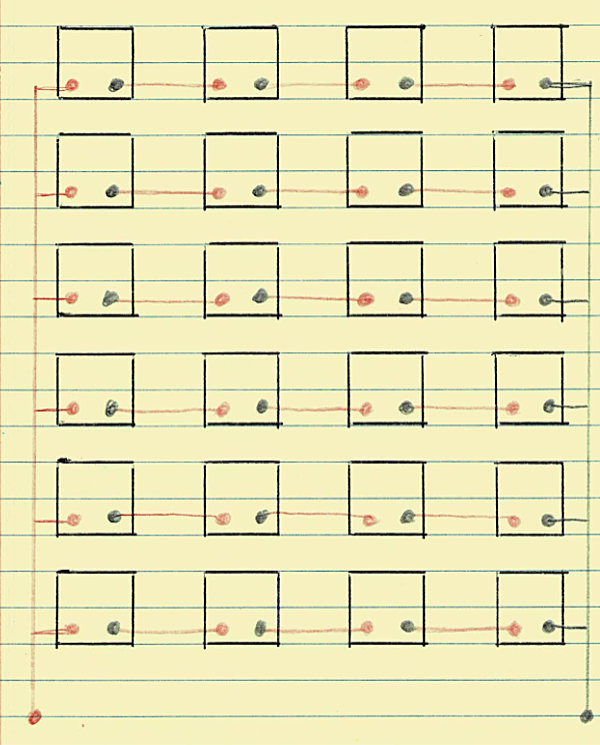How To Calculate Ah (Amp hours) and Wh (Watt hours) of a Battery Bank by for Modern Survival Blog
I will use my own off-grid battery bank for this example how to calculate its total Amp hours and Watt hours.
I’m not going to get into the little details and caveats. But this will provide a quick overview to figure it out. Maybe it will provide some insight for your own alternative energy battery bank one day.
Okay, lets go…
My objective was to put together a 48 volt battery bank (this is DC volts we’re talking about) with enough Watt hours (kWh – kilowatt hours) of energy storage to at least operate my essential systems for a few days before requiring recharge. I utilize an approximate 4000 watt solar panel array to recharge by way of a charge controller followed by a DC > AC inverter system.
Why 48 volts? Because it’s more efficient (than say, 12 volts), less loss, less current, and most off-grid inverters like to chew on 48 volts…
So, there are all sorts of battery types and voltage configurations. I’m not going to get into all that. Instead, I’m going to use 12-volt batteries in this example because that’s what I used on this particular battery bank.
My batteries are 12 volts each and rated for 100 Ah each (amp hours). What about the Amp hour rating? Put simply, you might say that this battery will provide 1 amp for 100 hours. Or 20 amps for 5 hours. You get the picture?
Volts times Amps equals Watts. So this battery will provide 12 x 100 = 1200 Watt hours. Or 1.2 kWh (kilowatt hours) of energy.
To get to 48 volts, I strung (connected) four batteries in series. So that string provides 48 x 100 = 4800 or 4.8 kWh of energy.
I put together 6 strings of 4 batteries in series. Then I put all six of those strings in parallel with each other. So that made 6 x 4800 = 28800 or 28.8 kWh of stored energy.
I sketched out a simple block diagram to illustrate my battery bank:

These are lead acid type batteries. Although more specifically they are AGM (Absorbent (or Absorbed) Glass Mat (or Material)) so I can keep them indoors without off-gassing.
All batteries have a cycle life versus depth-of-discharge curve. The deeper you regularly discharge them, the sooner they’ll die off. These parameters vary quite a bit depending on the specific battery type / chemistry which I won’t get into here. But I just wanted you to know that.




